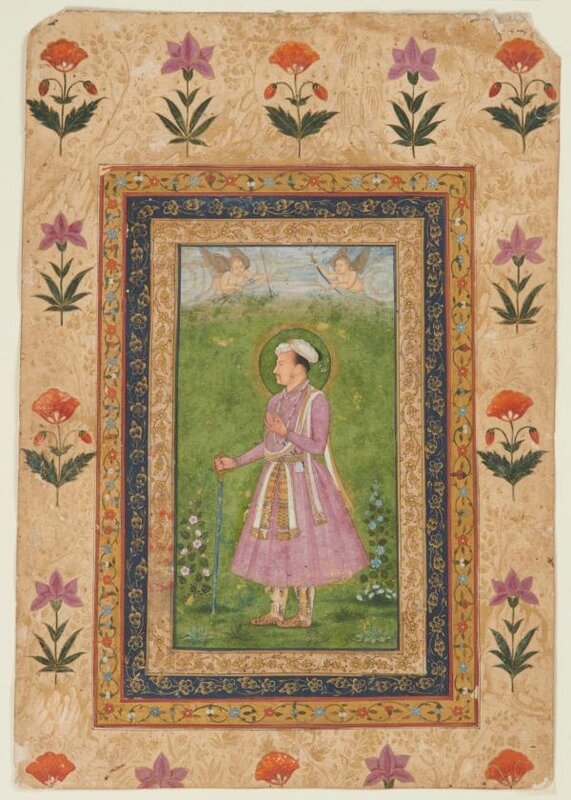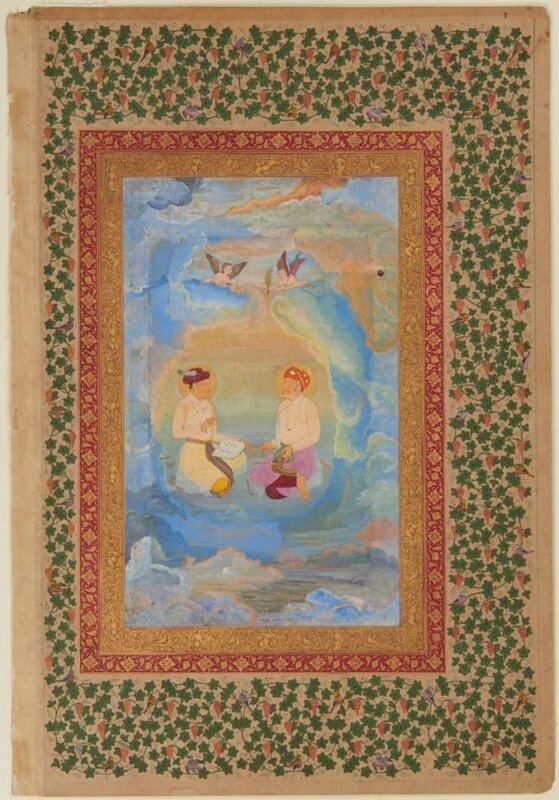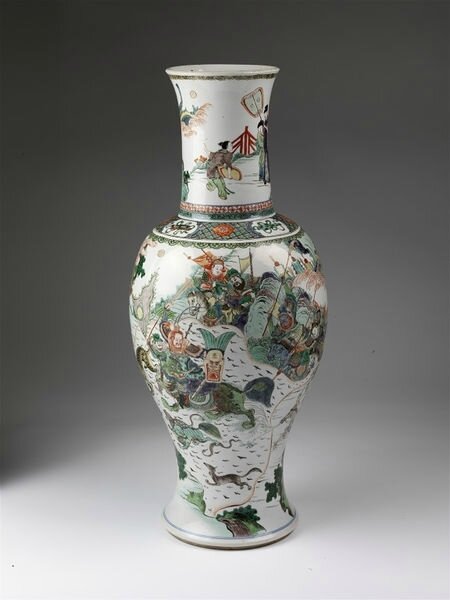![1]()
Tang Shaoyi
Tang Shao-yi was the first prime minister of the Republic of China. Born in Guangdong Province in 1861, he was sent to the United States to attend grammar school, high school and college. Following his return to China, he rose to political prominence through several diplomatic appointments within the imperial Chinese government. He served as Consul-General in Korea, Special Commissioner to Tibet, and Governor of Fengtian Province in Manchuria. He was often dispatched on official missions as a special envoy of the Qing imperial court. In 1908 one such mission brought him to Washington for a visit that was heavily covered by the American press. He led a delegation that presented gifts to the Library of Congress and was received at the White House. Tang Shao-yi was appointed Premier after the Republican Revolution of 1911 and later held additional positions as Minister of Communications and Minister of Foreign Affairs. He developed a lifelong interest in Chinese porcelain during his years of public service. Upon retirement and until his death in 1938, he devoted himself to collecting porcelains, dividing his time between Shanghai and his villa and gardens in Tangjiawan in southern China. Tang Shao-yi acquired both fine porcelains and decorative Shiwan pieces made in his native province of Guangdong. His collection aptly reflected his sense of beauty and deep connection with his family heritage.
![2]()
Tang Shaoyi
![3]()
Tang Shaoyi and his first grandson, Tong Ping, at the family residence in Zhuhai.
![A blue and white baluster vase, Kangxi period (1662-1722)]()
Lot 8075. A blue and white baluster vase, Kangxi period (1662-1722); 17 1/2in (44.5cm) high. Estimate US$ 4,000 - 6,000 (€ 3,300 - 4,900). © Bonhams 2001-2018
Of typical yenyen form with the baluster body surmounted by a tall trumpet neck, painted with flowering prunus sprays reserved on a blue 'cracked ice' ground, with dentil borders around the mouth and the foot, with a double circle in underglaze blue to the foot.
Property in the Collection of Tang Shao-yi.
![A pair of blue and white 'auspicious objects' bowls, Daoguang marks and of the period (1821-1850)]()
![8076-1]()
![8076-2]()
Lot 8076. A pair of blue and white 'auspicious objects' bowls, Daoguang marks and of the period (1821-1850); 7 1/8in (18.1cm) diameter. Estimate US$ 6,000 - 10,000 (€ 4,900 - 8,100). © Bonhams 2001-2018
The high exterior walls painted with four ruyi-bordered roundels enclosing four stylized characters reading wanshou wujiang (boundless long life), surrounded by lotus sprays and the bajixiang (eight auspicious objects), all between a classic scroll and a lappet band, the interior with a single shou medallion encircled by the bajixiang, the base with a six-character seal mark. (2)
Property in the Collection of Tang Shao-yi.
![A pair of blue and white 'auspicious objects' bowls, Daoguang marks and of the period (1821-1850)]()
![8077-1]()
![8077-2]()
Lot 8077. A pair of blue and white 'auspicious objects' bowls, Daoguang marks and of the period (1821-1850); 7 1/8in (18.1cm) diameter. Estimate US$ 6,000 - 10,000 (€ 4,900 - 8,100). © Bonhams 2001-2018
The high exterior walls painted with four ruyi-bordered roundels enclosing four stylized characters reading wanshou wujiang (boundless long life), surrounded by lotus sprays and the bajixiang (eight auspicious objects), all between a classic scroll and a lappet band, the interior with a single shou medallion encircled by the bajixiang, the base with a six-character seal mark. (2)
Property in the Collection of Tang Shao-yi.
![Two blue and white shallow bowls, Kangxi marks and period (1662-1722)]()
![8078-1]()
![8078-2]()
Lot 8078. Two blue and white shallow bowls, Kangxi marks and period (1662-1722); 6 1/4in (15.5cm) diameter. Estimate US$ 5,000 - 7,000 (€ 4,100 - 5,700). © Bonhams 2001-2018
Of similar form and pattern, each with a small boy wearing a waistband holding over his right shoulder a curling branch of a peony blossom forming a continuous meander, all on a blue-ground roundel, the exterior with single torn-off sprays of blossom and shrubs. (2)
Property in the Collection of Tang Shao-yi.
![Two blue and white shallow bowls, Kangxi marks and period (1662-1722)]()
![8079-1]()
![8079-2]()
Lot 8079. Two blue and white shallow bowls, Kangxi marks and period (1662-1722); 6 1/4in (15.5cm) diameter. Estimate US$ 5,000 - 7,000 (€ 4,100 - 5,700). © Bonhams 2001-2018
Of similar form and pattern, each with a small boy wearing a waistband holding over his right shoulder a curling branch of a peony blossom forming a continuous meander, all on a blue-ground roundel, the exterior with single torn-off sprays of blossom and shrubs. (2)
Property in the Collection of Tang Shao-yi.
![Two underglaze blue and iron-red 'dragon' dishes, Daoguang seal marks and of the period (1821-1850)]()
![8080-1]()
![8080-2]()
Lot 8080. Two underglaze blue and iron-red 'dragon' dishes, Daoguang seal marks and of the period (1821-1850); 7in (17.75cm) diameter. Estimate US$ 10,000 - 15,000 (€ 8,100 - 12,000). © Bonhams 2001-2018
Each of similar form and pattern, painted to the interior with a circular medallion enclosing an iron-red five-clawed dragon against a underglaze blue wave ground, the rims encircled with double lines, the exteriors rendered with a frieze of nine dragons in different poses on a similar wave ground, all between a cash border encircling the rim and pairs of double-lines around the foot, the exterior dragons also highlighted in iron-red, with six character marks on the foot. (2)
Property in the Collection of Tang Shao-yi.
![Two underglaze blue and iron-red 'dragon' dishes, Daoguang seal marks and of the period (1821-1850)]()
![8081-1]()
![8081-2]()
Lot 8081. Two underglaze blue and iron-red 'dragon' dishes, Daoguang seal marks and of the period (1821-1850); 7in (17.75cm) diameter. Estimate US$ 10,000 - 15,000 (€ 8,100 - 12,000). © Bonhams 2001-2018
Each of similar form and pattern, painted to the interior with a circular medallion enclosing an iron-red five-clawed dragon against a underglaze blue wave ground, the rims encircled with double lines, the exteriors rendered with a frieze of nine dragons in different poses on a similar wave ground, all between a cloud border encircling the rim and pairs of double-lines around the foot, the exterior dragons also highlighted in iron-red, with six character marks on the foot. (2)
Property in the Collection of Tang Shao-yi.
![A blue and white 'dragon' jardinière, Late Qing-Republic Period]()
![A blue and white 'dragon' jardinière, Late Qing-Republic Period]()
Lot 8082. A blue and white 'dragon' jardinière, Late Qing-Republic Period; 14 1/2in (36.8cm) high. Estimate US$ 8,000 - 12,000 (€ 6,500 - 9,800). © Bonhams 2001-2018
The steeply rounded sides rising from a concave foot with recessed center, painted around the body in vibrant blue with five five-clawed dragons pursuing flaming pearls amid clouds above a band of foaming waves,with Qianlong six-character mark below the flat everted lip.
Property in the Collection of Tang Shao-yi.
![Six blue and white lotus dishes, Qing Dynasty]()
![8076-1]()
![8076-2]()
![8077-1]()
![8077-2]()
![8078-1]()
![8078-2]()
Lot 8083. Six blue and white lotus dishes, Qing Dynasty; 6 1/8in (15.5cm) diameter, each dish. Estimate US$ 8,000 - 12,000 (€ 6,500 - 9,800). © Bonhams 2001-2018
The rounded sides rising to a slightly flared rim, painted to the interior with three dominant lotus blossoms surrounded by curling foliate stems and smaller sprays, below a band of lotus scrolls around the rim, the exterior similarly decorated with a continuous band of scrolling lotus, the bases with a six-character marks in underglaze blue, including two marked Kangxi, one Xianfeng, two Tongzhi, and one Guangxu. (6)
Property in the Collection of Tang Shao-yi.
![An underglaze blue and red 'cracked ice and prunus' vase, 18th-19th century]()
Lot 8084. An underglaze blue and red 'cracked ice and prunus' vase, 18th-19th century; 13 1/4in (33.6cm) high. Estimate US$ 5,000 - 7,000 (€ 4,100 - 5,700). © Bonhams 2001-2018
The globular body and neck decorated with underglaze blue and red in a pattern of cracked ice and blossoming prunus with a double blue line at the rolled lip and at the foot.
Property in the Collection of Tang Shao-yi.
![A Massive Puce enameled 'dragon' vase, Late Qing-Republic Period]()
![8076-1]()
Lot 8085. A Massive Puce enameled 'dragon' vase, Late Qing-Republic Period; 21 1/2in (54.5cm) high. Estimate US$ 25,000 - 40,000 (€ 20,000 - 33,000). © Bonhams 2001-2018
Generously proportioned, the spherical body painted with vivid puce enamels to depict five-clawed dragons amid clouds, two pairs chasing flaming pearls with a fifth dragon at the neck, the claws and fangs highlighted with white enamel, the dragons soaring above turbulent waves at the foot, with an apocryphal Yongzheng mark to the base.
Property in the Collection of Tang Shao-yi.
![Three Langyao glazed dishes, Yongzheng, Qianlong and Daoguang marks and of the period]()
![8076-1]()
![8076-2]()
![8077-1]()
Lot 8086. Three Langyao glazed dishes, Yongzheng, Qianlong and Daoguang marks and of the period; 6 1/2in (16.5cm) diameter the Yongzheng dish, 8 1/4in (20.5cm) diameter the Qianlong and Daoguang dishes. Estimate US$ 6,000 - 10,000 (€ 4,900 - 8,100). © Bonhams 2001-2018
The smaller dish with low sloping walls, the interior and exterior walls with a copper red glaze, with a six character mark in underglaze blue to the foot, the Qianlong and Daoguang of similar forms, the rims slightly everted, with six character marks in underglaze blue to the foot. (3)
Property in the Collection of Tang Shao-yi.
![Three copper red dishes, Qianlong seal marks and of the period (1736-1795)]()
![8076-1]()
![8076-2]()
![8077-1]()
Lot 8087. Three copper red dishes, Qianlong seal marks and of the period (1736-1795); 6 1/2in (16.5cm) diameter. Estimate US$ 8,000 - 12,000 (€ 6,500 - 9,800). © Bonhams 2001-2018
With shallow rounded sides, each of the three dishes with the interior and exterior covered in a rich red glaze of a crushed-raspberry tone, draining to white at the lip, pooling to a deeper tone around the top of the foot, with a six-character reign mark in underglaze blue. (3)
Property in the Collection of Tang Shao-yi.
![Two copper red bowls, Qianlong seal marks and of the period (1736-1795)]()
![8076-1]()
![8076-2]()
Lot 8088. Two copper red bowls, Qianlong seal marks and of the period (1736-1795); 7 3/4in (19.7cm) diameter. Estimate US$ 6,000 - 8,000 (€ 4,900 - 6,500). © Bonhams 2001-2018
The deep vessels covered on the exterior with langyao red glaze, the glaze thinning at the rim, the foot rim unglazed, six-character seal mark in underglaze-blue to base. (2)
Property in the Collection of Tang Shao-yi.
![Four Langyao glazed bowls, Yongzheng marks and of the period (1723-1735)]()
Lot 8089. Four Langyao glazed bowls, Yongzheng marks and of the period (1723-1735); 6in (15cm) diameter. Estimate US$ 10,000 - 15,000 (€ 8,100 - 12,000). © Bonhams 2001-2018
Each with shallow walls and supported by a straight foot ring, the exterior with an even copper red glaze pooling at the foot rim, the base with a six character mark in underglaze blue encircled by a double ring.(2)
Property in the Collection of Tang Shao-yi.
![A pair of Langyao glazed shallow bowls, Yongzheng marks and of the period (1723-1735)]()
Lot 8090. A pair of Langyao glazed shallow bowls, Yongzheng marks and of the period (1723-1735); 7 1/4in (18.4cm) diameter. Estimate US$ 8,000 - 12,000 (€ 6,500 - 9,800). © Bonhams 2001-2018
Each with deep rounded sides supported on a straight foot raising to a gently everted rim, the exterior and interior with a copper red glaze pooling at the foot rim, the glazed pulled from the white rim, the foot with a six character mark in underglaze blue encircled by a double ring. (4)
Property in the Collection of Tang Shao-yi.
![Three Langyao glazed dishes, Daoguang seal marks and of the period (1821-1850)]()
Lot 8091. Three Langyao glazed dishes, Daoguang seal marks and of the period (1821-1850); 8 1/4in (21cm) diameter. Estimate US$ 2,000 - 3,500 (€ 1,600 - 2,800). © Bonhams 2001-2018
With shallow sides rising to a white edged rim, the interior and exterior of each with an even deep red glaze, the six-character mark in seal script in underglaze blue at the center of the recessed base. (3)
Property in the Collection of Tang Shao-yi.
![Four Langyao glazed dishes, Daoguang seal marks and of the period (1821-1850)]()
Lot 8092. Four Langyao glazed dishes, Daoguang seal marks and of the period (1821-1850); 8 1/4in (21cm) diameter. Estimate US$ 2,000 - 3,500 (€ 1,600 - 2,800). © Bonhams 2001-2018
With shallow sides rising to a white edged rim, the interior and exterior of each with an even deep red glaze, the six-character mark in seal script in underglaze blue at the center of the recessed base. (4)
Property in the Collection of Tang Shao-yi.
![Three Langyao glazed dishes, Daoguang seal marks and of the period (1821-1850)]()
Lot 8093. Three Langyao glazed dishes, Daoguang seal marks and of the period (1821-1850); 8 1/4in (21cm) diameter. Estimate US$ 2,000 - 3,500 (€ 1,600 - 2,800). © Bonhams 2001-2018
With shallow sides rising to a white edged rim, the interior and exterior of each with an even deep red glaze, the six-character mark in seal script in underglaze blue at the center of the recessed base. (3)
Property in the Collection of Tang Shao-yi.
![4]()
Lot 8096. A pair of Canton enameled metal bowls, 19th century; 9 3/4in (24.7cm) diameter. Estimate US$ 2,000 - 4,000 (€ 1,600 - 3,300). © Bonhams 2001-2018
Each bowl with deep curving walls, the copper lip and foot rim exposed, the exterior of each bowl with circular medallions enclosing auspicious fruit, flowers or insects scattered on a yellow ground, with a row of red lotus petals along the foot rim, the interior of each bowl with a cobalt blue bat and peach bough on a turquoise ground.
Property in the Collection of Tang Shao-yi.
![5]()
Lot 8097. A pair of Canton enameled metal bowls, 19th century; 9 3/4in (24.7cm) diameter. Estimate US$ 2,000 - 4,000 (€ 1,600 - 3,300). © Bonhams 2001-2018
Each bowl with deep curving walls, the copper lip and foot rim exposed, the exterior of each bowl with circular medallions enclosing auspicious fruit, flowers or insects scattered on a yellow ground, with a row of red lotus petals along the foot rim, the interior of each bowl with a cobalt blue bat and peach bough on a turquoise ground. (2).
Property in the Collection of Tang Shao-yi.
Bonhams. CHINESE WORKS OF ART AND PAINTINGS, 19 Mar 2018, 12:00 EDT, NEW YORK


















































































































































